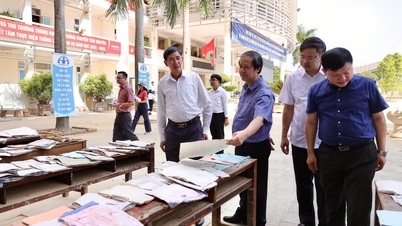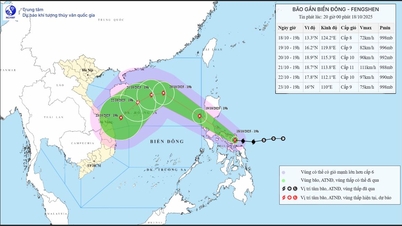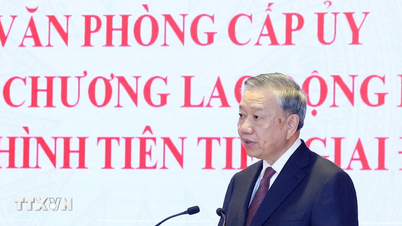
Commenting recently in Germany's leading foreign affairs magazine INTERNATIONALE POLITIK (IP - ip-quarterly.com/en), Markus Jaeger, visiting professor at Columbia University and a research associate at the Center for Geopolitics , Geoeconomics and Technology of the German Council on Foreign Relations (DGAP), said that the economic policy of the US President Donald Trump's administration is creating a new "coercive protectionism", causing serious damage to the international trade system and posing significant challenges to the European Union (EU). The EU needs to prepare for continued instability in transatlantic trade relations and strengthen its geo-economic deterrence policies.
The biggest change
The shift in trade policy to “coercive protectionism” is the most significant change in US economic policy under the Trump 2.0 administration. This policy is based on the use of protectionist measures and threats to exploit other countries’ trade dependence to gain economic and political concessions.
The average effective tariff on imports into the US has risen from 2% to nearly 18%, the highest level since the infamous Smoot-Hawley Act of the 1930s. The administration has imposed sectoral tariffs (e.g., steel, autos, copper, pharmaceuticals) and announced so-called reciprocal tariffs with a 10% “base” rate applicable to most countries, in addition to country-specific tariffs reflecting bilateral trade balances in goods.
The lack of coordination and disruptiveness in policy formulation and implementation, which is driven more by “presidential whim” than by an interagency process, is contributing to the instability of the international trade regime. US trade policy pursues multiple, not always coherent, objectives, with the large US trade deficit of particular concern.
On reducing the trade deficit: Although “reciprocal tariffs” are designed to reduce the overall trade deficit, many studies show that the impact of tariffs on the trade deficit is very small.
On boosting manufacturing and jobs: The Trump administration has also justified tariffs as a way to boost domestic investment and industrial employment. However, companies (both domestic and foreign) remain reluctant to invest large sums due to uncertainty over whether tariffs will remain in place in the medium to long term.
Moreover, manufacturing employment has been declining for decades in advanced economies. The highly competitive manufacturing sector in the United States is now capital-intensive rather than labor-intensive. Therefore, the employment benefits from higher tariffs are expected to be negligible or even negative.
On revenue and national security: The US government’s revenue objective is the only reason for which there is clear evidence. The US Congressional Budget Office estimates that over the next decade, higher tariffs (after adjustment) will reduce the cumulative US budget deficit by between $3.3 trillion and $4 trillion.
Additionally, national security is often invoked to impose sectoral restrictions (e.g., semiconductors, rare earths). While these restrictions may help reduce import dependence and enhance long-term supply security, they also increase costs and require time to develop domestic production capacity.
Transatlantic tensions and the lesson of deterrence
EU-US trade relations are facing significant challenges. In addition to increasing sectoral tariffs (e.g. steel and cars), the US government initially imposed a 30% tariff on EU imports in the context of “reciprocal tariffs”, which were later suspended to allow for bilateral negotiations. Although the EU had prepared retaliatory tariffs in response to the sectoral tariffs and “reciprocal tariffs”, it refrained from implementing them so as not to jeopardize the negotiations.
The EU has also refrained from activating its newly created anti-enforcement tool, which would allow for more economic retaliation. For example, the ability to threaten to restrict US services exports to the EU would strengthen Brussels’ bargaining position, in part because the US is a major exporter of services to the EU. The US trade surplus in services with the EU is almost equal to the EU’s trade surplus in goods with the US.
Admittedly, the threat of retaliation could quickly lead to unwanted escalation. But successful geo-economic deterrence can be a very effective tool to avoid costly trade conflicts or at least reach agreement on more favorable terms. However, the EU has not been willing to take enough risks in its negotiations with the Trump administration.
For example, China did not hesitate to retaliate against US tariff hikes. When the corresponding tariffs were raised to more than 100%, Washington agreed to de-escalate tensions and seek a negotiated solution. How Beijing’s willingness to restrict exports of essential raw materials contributed to the de-escalation of tensions remains an open question. However, the fact that the Trump administration responded with costly retaliatory measures, and Washington also paused “retaliatory tariffs” in April of this year after its announcement caused significant volatility in financial markets, shows that the Trump administration is not indifferent to the growing economic and financial costs of trade wars.
Brussels and Washington signed a “political” trade deal in late July, but it is not yet legally binding. Under the deal, the US will impose tariffs of up to 15% on imports from the EU, including cars and car parts. This will also apply to future tariffs on pharmaceuticals and semiconductors. Tariffs on many other goods, including aircraft and aircraft parts, will be reduced to previous levels. US quotas on steel imports from the EU will also be restored to “historic levels”.
The EU has also pledged to invest $600 billion in the US economy and import $750 billion in energy, although it remains unclear exactly how the EU will implement these commitments. In addition, all EU tariffs on industrial goods imported from the US will be eliminated. Both sides also pledged to reduce non-tariff barriers to trade. However, there are still significant differences between the two sides on what this means in practice, which could lead to further disputes and uncertainty in bilateral trade relations, including over digital taxes, EU green regulations and the EU’s treatment of US tech companies.
In the face of famine, Professor Jaeger suggests that the EU should accelerate efforts to enhance economic security through export diversification and reduce import-related vulnerabilities. Given that US trade policy is heavily transactional and based on coercive protectionism, the EU should not overestimate the current US administration’s willingness to reach credible and lasting agreements.
Source: https://baotintuc.vn/phan-tichnhan-dinh/thue-quan-my-day-eu-vao-the-phong-thu-thuong-mai-20251018073624750.htm



![[Photo] General Secretary To Lam attends the 95th Anniversary of the Party Central Office's Traditional Day](https://vphoto.vietnam.vn/thumb/1200x675/vietnam/resource/IMAGE/2025/10/18/1760784671836_a1-bnd-4476-1940-jpg.webp)
![[Photo] Closing ceremony of the 18th Congress of Hanoi Party Committee](https://vphoto.vietnam.vn/thumb/1200x675/vietnam/resource/IMAGE/2025/10/17/1760704850107_ndo_br_1-jpg.webp)
![[Photo] Collecting waste, sowing green seeds](https://vphoto.vietnam.vn/thumb/1200x675/vietnam/resource/IMAGE/2025/10/18/1760786475497_ndo_br_1-jpg.webp)

![[Photo] Immerse yourself in the colorful musical world of “Secret Garden Live in Vietnam”](https://vphoto.vietnam.vn/thumb/1200x675/vietnam/resource/IMAGE/2025/10/18/1760805978427_ndo_br_thiet-ke-chua-co-ten-41-png.webp)
























































































Comment (0)